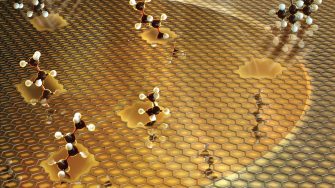

The development of atomically thin nanoporous membranes holds significant promise for advancing challenging chemical separations. These membranes, crafted from materials like graphene, possess pores at the atomic scale, enabling highly selective filtration. The atomically thin nanoporous materials offer a new means to study and manipulate the transport of molecular fluids, providing a versatile platform for examining nanoscale fluid properties previously not accessible. This precision allows for the efficient separation of molecules with minimal energy consumption, significantly outperforming conventional methods. The ultra-thin nature of these membranes reduces resistance to fluid flow, resulting in faster processing times and lower operational costs. The UNESCO centre has an active research program dedicated to developing novel ways of engineering, studying selective molecular flow, and manufacturing these innovative membranes. These advancements are crucial for applications in water purification, gas separation, and bioseparations, addressing critical issues in resource and energy sustainability.
- Research team
- Funding body
- Publications
ARC FT FT210100364
J. Wang‡,*, C. Cheng‡,*, X. Zheng. J. C. Idrobo, A-Y. Lu, J-H. Park, B. G. Shin, S. J. Jung, T. Zhang, H. Wang, G. Gao, B. Shin, X. Jin, L. Ju, Y. Han, L-J. Li, R. Karnik, J. Kong* Cascaded compression of the size distribution of nanopores in monolayer graphene. Nature 623, 956-963 (2023) https://www.nature.com/articles/s41586-023-06689-y
